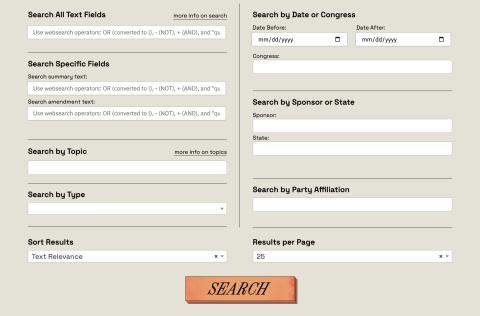The Amendments Project

Demonstrators in the halls of the Florida Legislature supporting and opposing the Equal Rights Amendment, 1982.
The U.S. Constitution was made to be amended, yet political polarization has made it significantly more difficult to amend the Constitution than the framers intended. Although only 27 amendments to the U.S. Constitution have been ratified, thousands of proposed amendments have been introduced in Congress or circulated in public petitions. It is important to learn about these failed amendments to understand not only America's legal and political history but also the ongoing efforts to reform the Constitution and America’s political system.
Funded in part by the National Endowment for the Humanities and led by Harvard professor Dr. Jill Lepore, the Amendments Project (TAP) is essentially an archive of failures. By compiling, classifying, and analyzing efforts to revise the Constitution, the project seeks “to recover a lost tradition of constitutional tinkering and to rekindle Americans’ constitutional imagination.”
TAP features a searchable database of more than 11,000 amendments proposed in Congress between 1789 and 2022; more than 9,000 petitions introduced in Congress between 1789 and 1949 that propose, support, or oppose constitutional amendment; and thousands of other proposed amendments that never made it to Congress. It also features stories analyzing some of these failed attempts to amend the Constitution, from the Child Labor Amendment to proposals requiring a balanced federal budget.
In addition to providing an overview of constitutional history and the amendment process, the site enables advanced search and filtering of the amendments database, making it an effective hands-on introduction to using search tools for research. The questions below encourage discussion and comprehension of the site’s content as well as the search tools.

